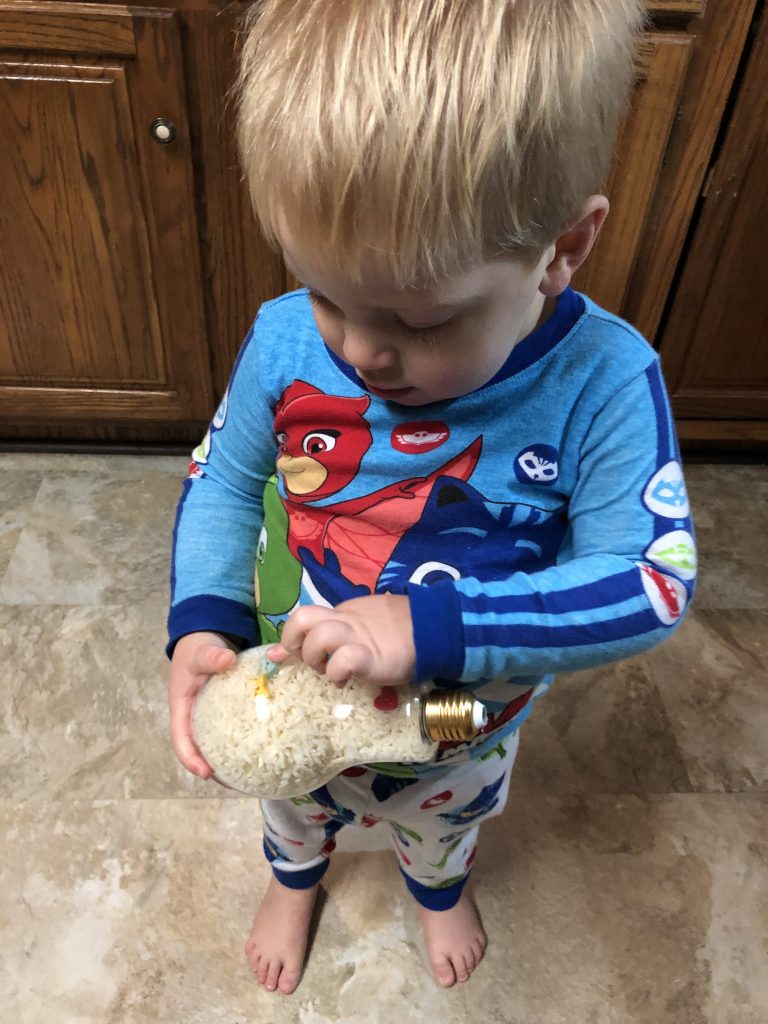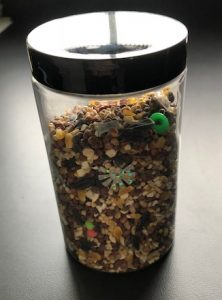
Find-It DIY (This contains small objects that a child could choke on if it breaks. Please do not leave your child unattended with the Find-It bottle.)
STEM Concepts: Science (physical science), Math (classification, measurement)
Materials: An empty clear bottle with a lid, rice, super glue, little objects that can fit through the bottle’s neck (examples: puff balls, marbles, buttons, a small toy animal, etc.)
What to do: Fill the bottle with a small amount of rice, add some of the small pieces, add some more rice and repeat until you’ve added all of the small items into the bottle. Do not fill the bottle completely! Put a small amount of super glue on the inside of the cap and screw the cap on. Allow the glue some time to completely seal or dry.
Language and Communication: Encourage your child to find the things you’ve hidden in the rice.
Expand the activity: Turn it into a shake for a fun music toy
Match It
STEM Concepts: Science (physical science), Math (spatial relationships, patterns)
Materials: Objects in your home that have two pieces. For example, a pot and lid, two socks, a puzzle, shoes, two bears of the same size and color, etc.
What to do: Take all of the items and separate them from their pairs. Have your child match them all back up again.
Language and Communication: When your toddler makes a match praise her by saying things like: “Great! The pot goes with the lid.”
Expand the Activity: Match items by color and not just item. Categorize into a larger category. For example, clothes, containers, toys.
Texture Soup
STEM Concepts: Science (physical science, life science) Technology (simple tools), Math (spatial relationships)
Materials: Different materials of a variety of textures. For example, a piece of felt, silk, cotton, corduroy, plastic and aluminum foil, a pot, and a large wooden spoon.
What to do: Give all of the textured items to your child and have them add it to the pot. Mix the soup as they go.
Language and Communication: Talk with your child about the different surfaces of the materials. Use descriptive words such as: smooth, soft, rough, bumpy. Using these words will build your child’s vocabulary and knowledge of different materials and textures in their world.
Expand the Activity: Use real foods to explore the textures and add smell and taste.

